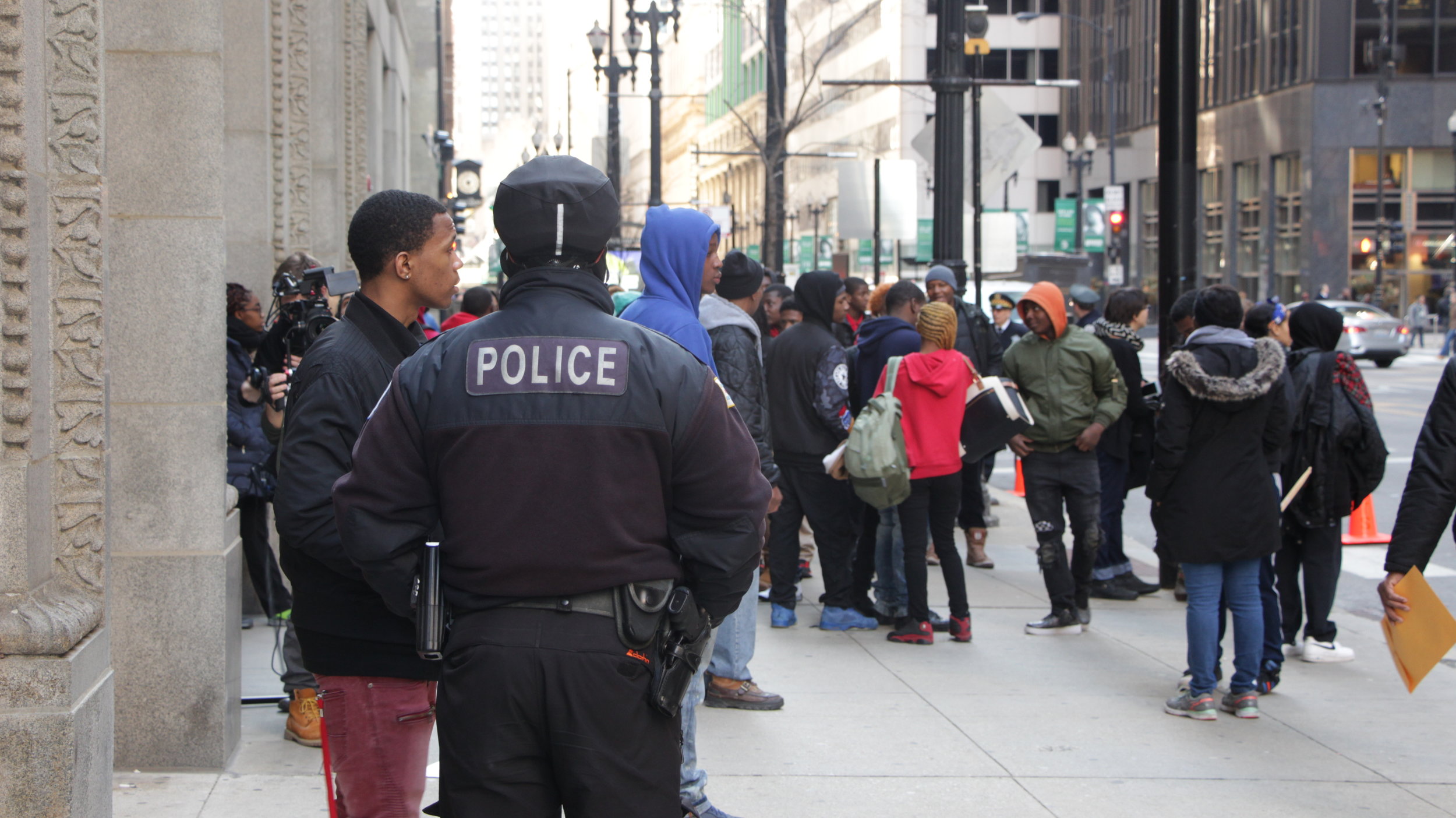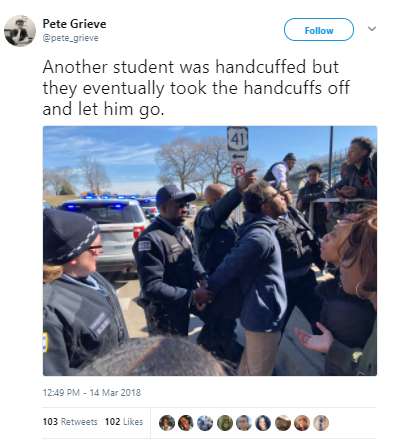In Chicago, not all protests are equal: A look into the politics of policing black and brown youth
By Pascal Sabino, Environmental Health and Wellness Editor, The Real Chi & Industry Pathways 2018 Cohort & Arlana Shikongo, Education and Youth Editor
As the dust settles on last week’s National School Walkout, youth activists have been praised and sanctioned by the public for their civic participation. However, in Chicago not all students have been treated equally, with many from majority black and brown schools facing heavy scrutiny from school administrators.
On the March 14 National Walkout Day, Chicago students seized the opportunity to tie together the gun violence experienced by survivors in Florida to the structural violence experienced regularly by underserved students on the South Side of Chicago. They left class to voice their outrage at the CPS Board’s decision to divest funding and shut down four schools in Englewood.
However, while Chicago Public Schools was supportive of protests to support gun control, they would not tolerate resistance against the city’s controversial plans to disinvest in schools on the South Side.
Compared to over 1,000 students at Mather High School on the north side participating in the walk out, only three students were able to participate at Hope, despite widespread interest and support from the school’s 137 student. Hope is one of the four Englewood high schools slated to close.
Erica Nanton, an organizer who continuously works with these students, expressed that by shutting down schools and turning a blind eye to inequality, the city was being complacent in the root causes of violence.
"Poverty is violence. Inequality is violence. There are so many things that these students have a right to be upset about — just like Parkland students — because they face gun violence all the time,” she said. “These youth are facing school closures. They're facing their whole infrastructure and sense of safety and their communities being destroyed around them.”
Youth Silenced at Directly Impacted Schools
Chicago Teachers Union member Rebecca Martinez noted that the key reason so few students from Hope were able to participate in the protest was because their school threatened them. "Students were pressured this morning and threatened with getting expelled or suspended if they walked out,” she said.
Before the protests, head of CPS Janice Jackson endorsed students’ rights to protest, saying that no punishment would be imposed on them for walking out. "We will not enact any disciplinary measures. We think it's critically important that the student's voice is heard at this critical point in our history," Jackson said.
Jackson’s statements held true for many other schools such as Benito Juarez Community Academy, and selective enrollment school Whitney Young Magnet High School. At Whitney Young, the principal was supportive of student organizers. At Juarez, Mayor Rahm Emanuel and former Illinois governor Pat Quinn met with student organizers in solidarity with their vision for a future without gun violence in schools. Students from schools like Hope did not get the same solidarity.
Martinez explained that CPS policy states that if a student decided to walk out and did not walk back in, they would get an unexcused absence and their parents would be called. “Definitely not what was expressed to students that were excited about walking out this morning at Hope,” she said, adding that students at Robeson High School faced similar pressure and threats from their administration. "Obviously it's an attempt of the district and of the mayor to silence young black voices who are expressing their anger about their schools getting shut down."
Hope’s administration walked back on threats to punish students, and the three students who walked out were not suspended. At Robeson the penalty was reduced to only five days of after-school detention.
Yet at Kenwood Academy, another South Side high school, administrators broke from Jackson’s support of the walkout. The principal threatened suspension and expulsion on the participating students, many of whom raised their voices in solidarity with the four schools being shut down.
Participating students from Kenwood indicated that their school even threatened to involve the police if they didn’t return to class. One Kenwood student was detained by police, while another was handcuffed as activists took their march to Lakeshore Drive. Both students were eventually released.
As a result of the threats, many students missed far more than 17 minutes of class time. Organizers said this sent a clear message that the backlash wasn’t about disturbing class, but rather about opposing the city’s education policy.
Students Bring their Demands to the City Government
Many of the students who elected not to return to class after 17 minutes took their grievances to their representatives at City Hall. Student activists who assembled at city hall listed their demands at a press conference, where they called for an elected board of education, rather than one appointed by the mayor.
Students from the four Englewood schools, Back of the Yards High School, Curie High School, Hancock High School, Kelly High Schoo, Lindblom Math Science Academy and Simeon Career Academy presented a list of 15 demands to City Council at another press conference held later that day. At the top of the list was the demand to keep all schools open, followed by calls for more funding for black and brown schools, more counselors, therapists and social workers, an end to the expansion of Charter Schools, and the elimination of the gang database.
Youth leaders also organized a voter registration drive, where eligible students marched from City Hall to the Board of Election Commissioners to register to vote, with a standing goal of voting Rahm Emanuel out of office.
“The goal that the students have is 10,000 new registered voters in our divested communities,” said Nanton, who took the lead in bringing students to get registered. “That includes adult voters who are disengaged, who feel disenfranchised, so that they can become a voice that is listened to and respected in the electoral process.”
The treatment of South Side students on National Walkout Day demonstrates that not all students in Chicago are treated equally and that the voices of students who dare to challenge the Mayor will be silenced by his government.
“The student voices today, especially the ones that were being reprimanded, were about [not] closing their schools, stopping the violence in their communities, not so much the Parkland message,” said Martinez. “It was about tying those two things together, and obviously its the racism and discrimination that most students in CPS experience on a regular basis that was amplified today.”






VIDEO: On March 14th, 2018, students from Gary Comer College Prep in Chicago, IL decided to participate in the nationwide school walkout to honor the victims of the Parkland tragedy and end gun violence.